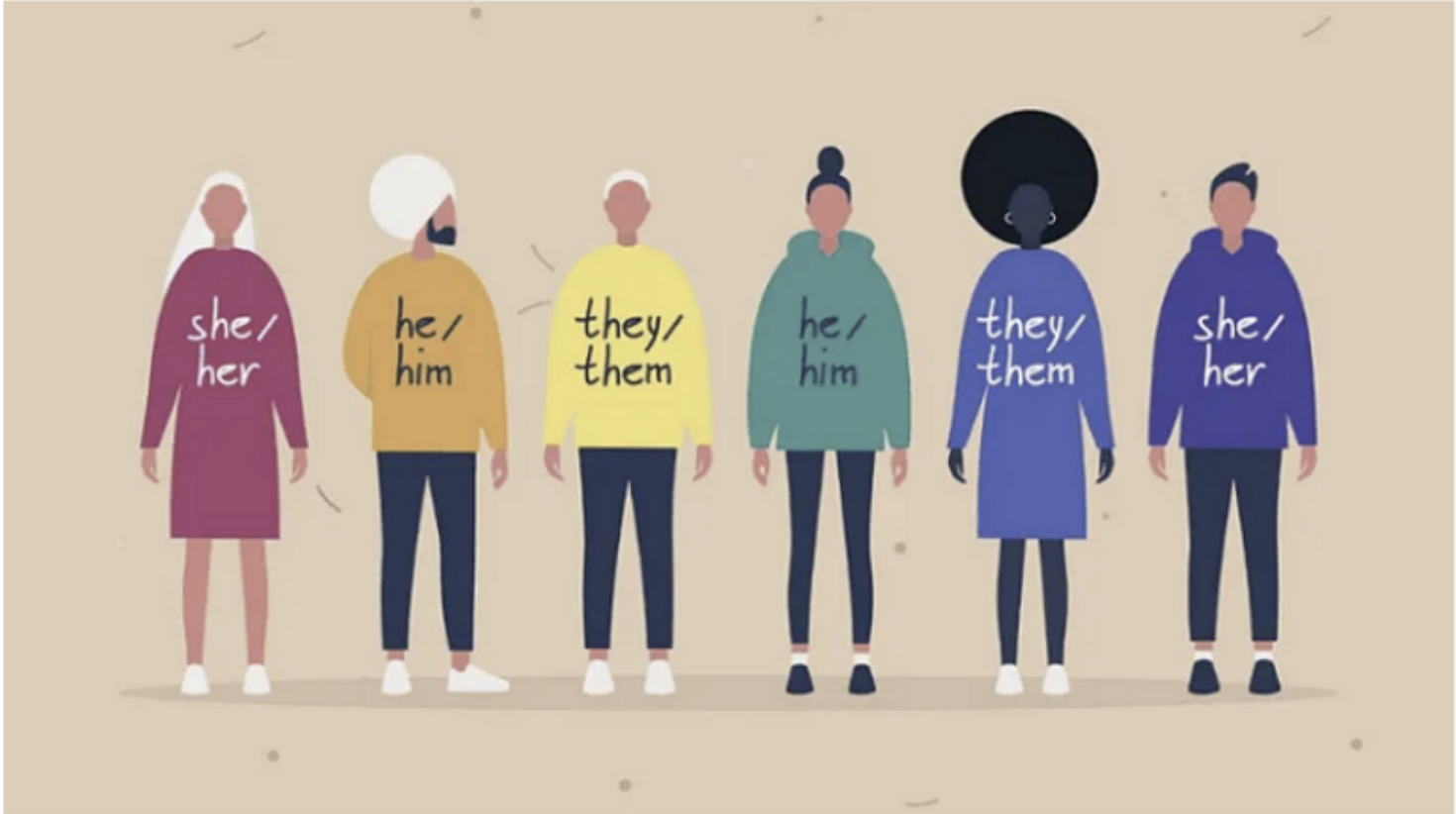I Don’t Care If They’re Blue, Purple or Green
I’m currently creating a lot of digital resources, workbooks and worksheets via Canva.
I often add graphics to these resources. While searching through graphics, I noticed that these cartoony, silhouette-like, easily placeable types of graphics were extremely popular. I also noticed that the artists often added a really strange tint to their characters’ skin tones, especially with darker tones, making them purplish, blueish, pinkish or red-ish. Luckily, Canva allows you to change colors out on certain graphics, so I was able to swap them for natural skin tones.
Multiple photos of people who are not White with odd tints added to them.
This experience reminded me of a conversation I was apart of that took place on LinkedIn initiated by Janelle Benjamin, regarding the image below.
Various people standing side by side with different sets of pronouns on their clothing.
The original post asked for input on their feelings around the person with they/them on their blue clothing (I tried to find the original post but I think it’s gone).
The poster asked:
Why this person was so othered?
Why their skin tone was the same as everyone else’s pants?
Why their afro and earrings were not enough to distinguish them?
Why the person who was most likely to be perceived as a Black woman had been chosen for they/them?
There were lots of people that shared but I remember sharing that it made me think of “they’re so Black, they’re blue”, a colorist aggression I’d heard others say all throughout my childhood. That image has been shared numerous times and is still available for downloading along with similar images shown below.
Multiple photos where a rendition of a Black person is made blue.
The artist, Nadia Snopek, is White and likely did not consult a single Black person before publishing. In the originally mentioned conversation, Ku’ulani Keohokalole (She/Her/‘Oia), shared something I’ll never forget. She shared that “When people say they ‘don’t care if people are blue, purple, or green’, I tell them there are no blue, purple, or green people. People don’t come in those colors, so what are you really saying?”
Various people standing side by side with different sets of pronouns on their clothing without an anti-Black message.
K Mataōtama Strohl (They/Them)
K is an award-winning consultant, coach, writer and speaker. K is also the curator of a content space that shares “refreshingly genuine and educational bite sized yet profound insights and experiences”, as well as the host of two popular podcasts.





